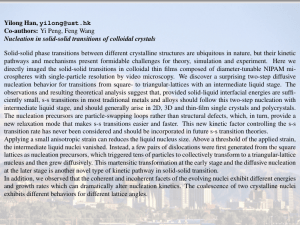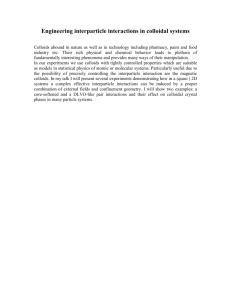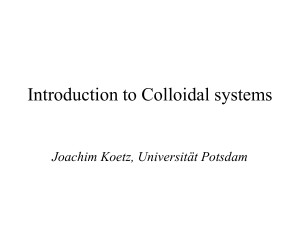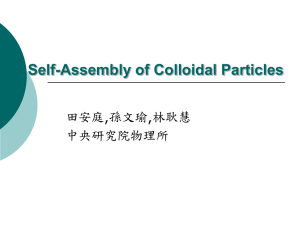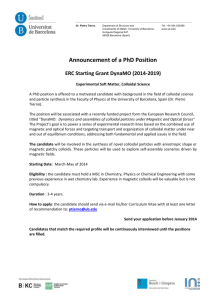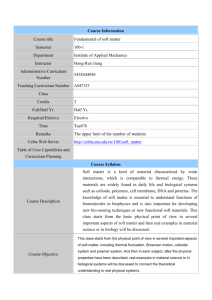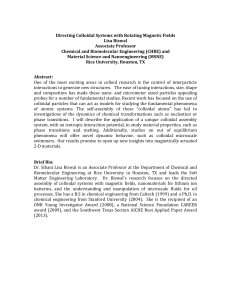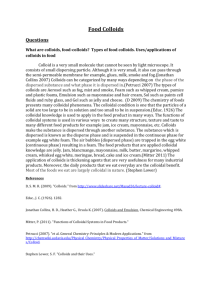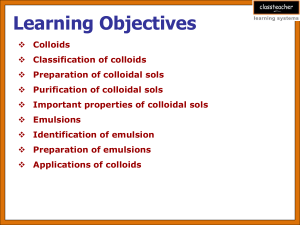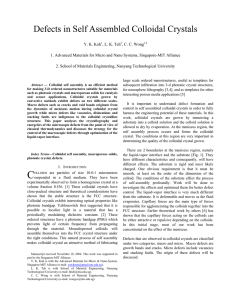"Glass transitions in monolayers of colloidal ellipsoids"
advertisement
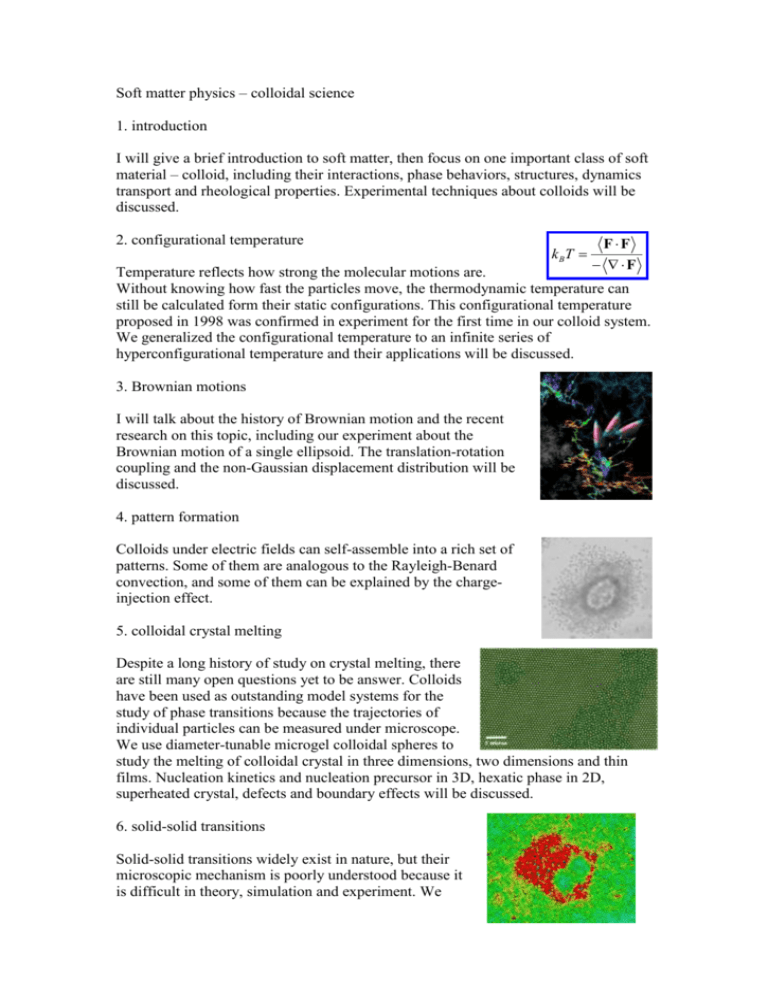
Soft matter physics – colloidal science 1. introduction I will give a brief introduction to soft matter, then focus on one important class of soft material – colloid, including their interactions, phase behaviors, structures, dynamics transport and rheological properties. Experimental techniques about colloids will be discussed. 2. configurational temperature k BT FF F Temperature reflects how strong the molecular motions are. Without knowing how fast the particles move, the thermodynamic temperature can still be calculated form their static configurations. This configurational temperature proposed in 1998 was confirmed in experiment for the first time in our colloid system. We generalized the configurational temperature to an infinite series of hyperconfigurational temperature and their applications will be discussed. 3. Brownian motions I will talk about the history of Brownian motion and the recent research on this topic, including our experiment about the Brownian motion of a single ellipsoid. The translation-rotation coupling and the non-Gaussian displacement distribution will be discussed. 4. pattern formation Colloids under electric fields can self-assemble into a rich set of patterns. Some of them are analogous to the Rayleigh-Benard convection, and some of them can be explained by the chargeinjection effect. 5. colloidal crystal melting Despite a long history of study on crystal melting, there are still many open questions yet to be answer. Colloids have been used as outstanding model systems for the study of phase transitions because the trajectories of individual particles can be measured under microscope. We use diameter-tunable microgel colloidal spheres to study the melting of colloidal crystal in three dimensions, two dimensions and thin films. Nucleation kinetics and nucleation precursor in 3D, hexatic phase in 2D, superheated crystal, defects and boundary effects will be discussed. 6. solid-solid transitions Solid-solid transitions widely exist in nature, but their microscopic mechanism is poorly understood because it is difficult in theory, simulation and experiment. We performed the first experiment on nucleation during solid-solid transitions with single-particle dynamics by using colloids and discovered two types of novel nucleation processes. 7. glass transitions The nature of glass transition is one of the major challenge is physics. When a liquid is supercooled towards the glass transition, dynamics drastically slows down and becomes progressively more heterogeneous, while the static structure changes little. Finding a relationship between the dynamics and static structural properties is a long-standing challenge. We report the first experiment about colloidal glass composed of non-spherical particles and two structural signatures of dynamic heterogeneities. The phase behavior of ellipsoids will be discussed. 8. geometrical frustration We use colloidal spheres to mimic Ising spins on a triangular lattice and achieved the first geometrically frustrated system with single-‘spin’ dynamics. It connects the two research fields of soft matter and magnetism. 9. phase-space network (statistical mechanics/math) Phase space is a key concept in statistical physics, but often too large and complicated to be exactly constructed and measured. We propose to use complex-network analysis to understand phase spaces of some systems with discrete degree of freedom. The phase-space networks of some spin systems and lattice gases share some common features and establish a new class of complex networks that have different topology compared with all the previously known networks. An interesting mathematical by-product is the one-to-one mapping between the 2D jigsaw-puzzle tiling and 3D sphere stacking. This mapping casts new light on some combinatorial problems.
